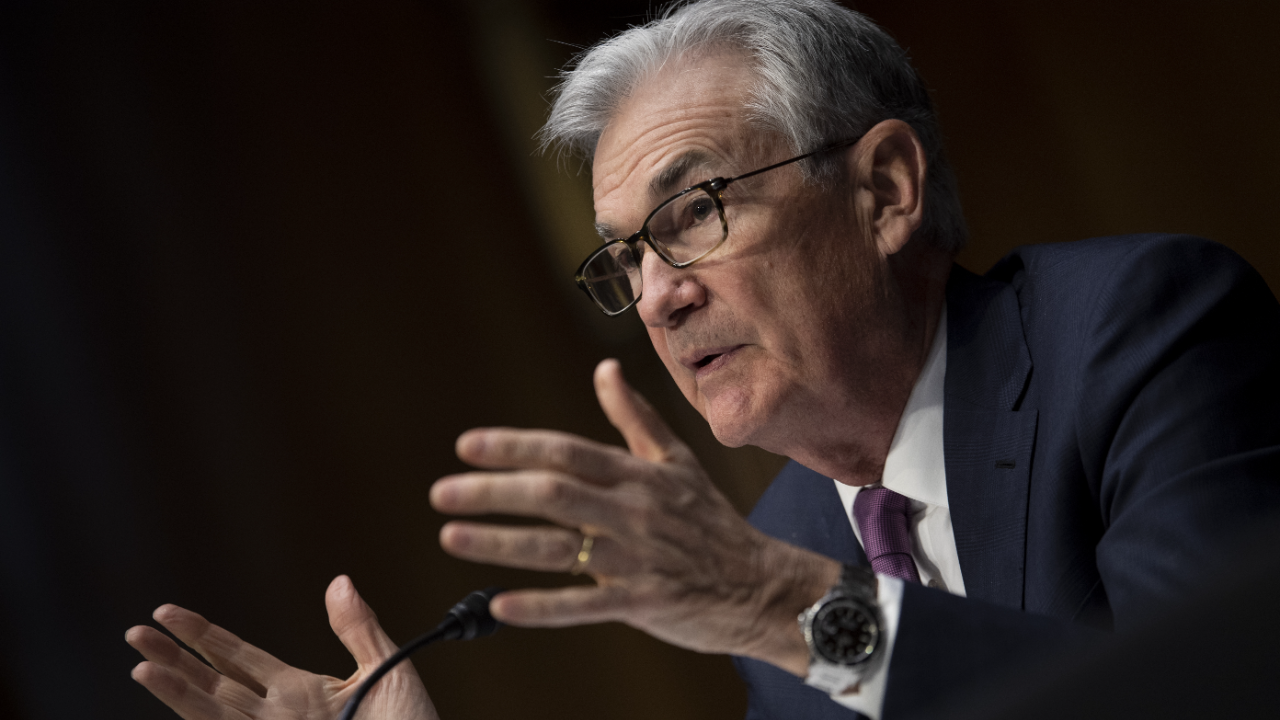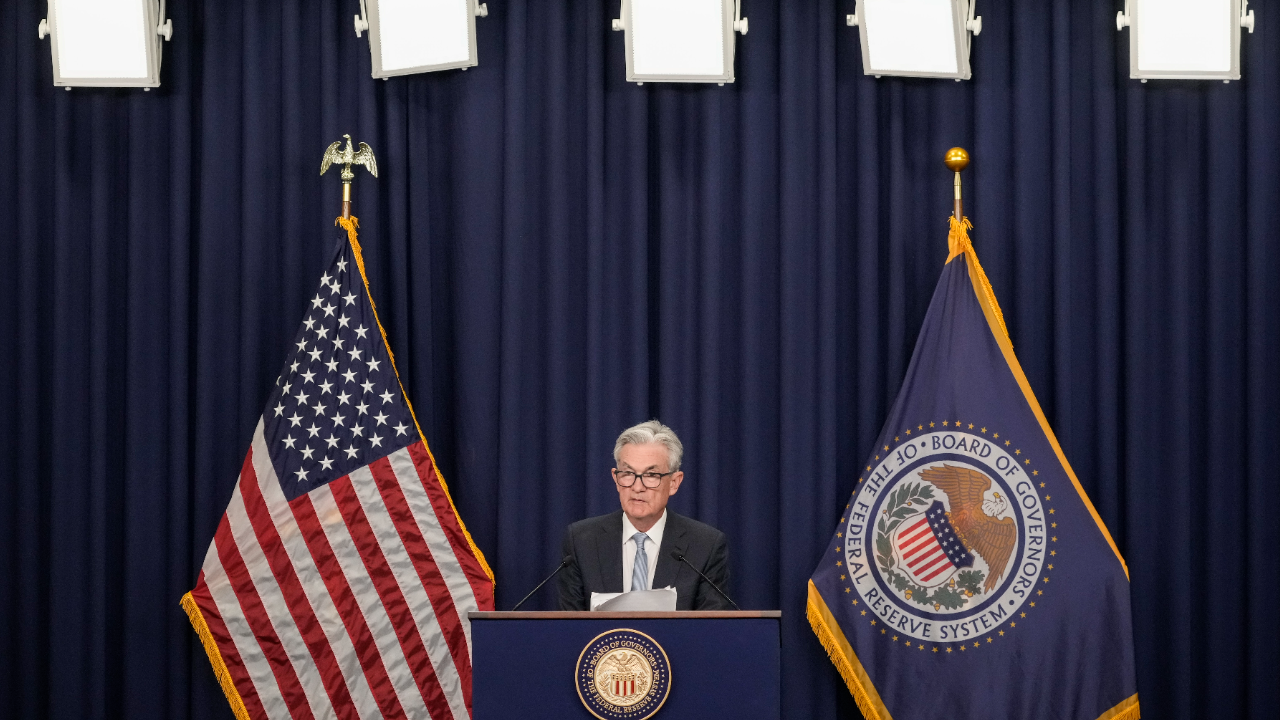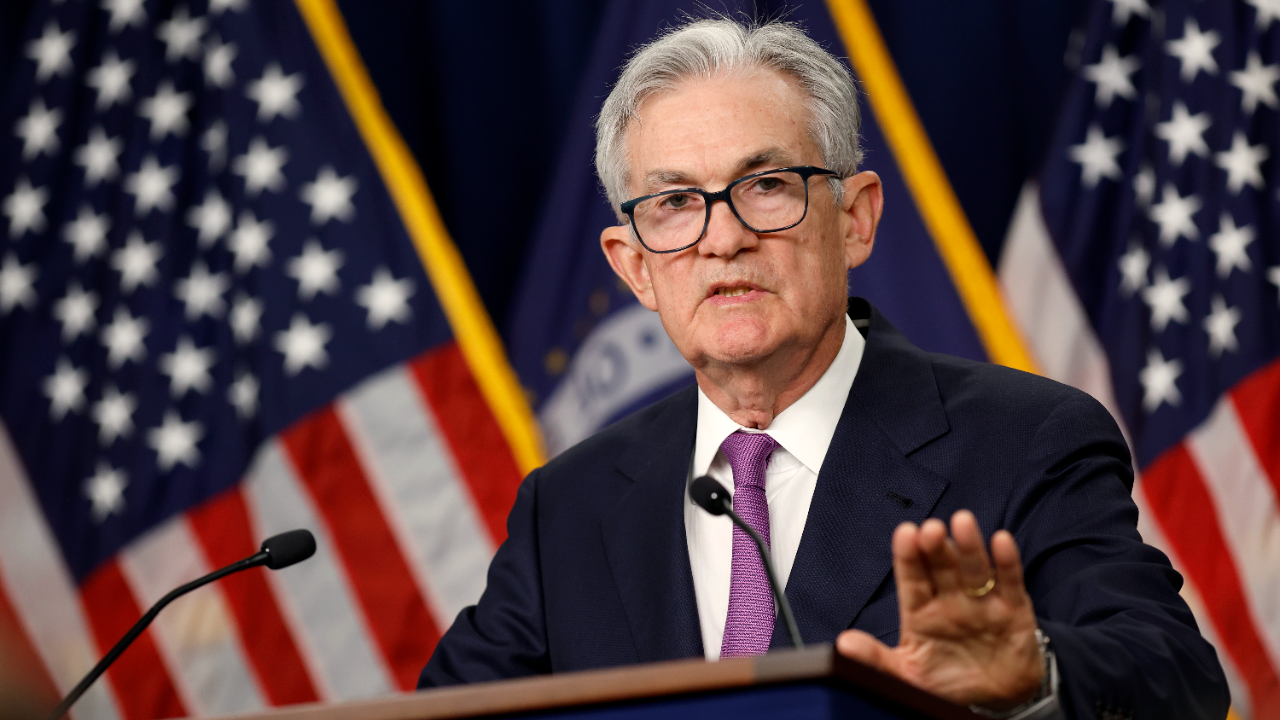Fed keeps interest rates at zero, signals upcoming rate hike

The Federal Reserve left interest rates and a key bond-buying taper plan unchanged on Wednesday but signaled that an end to its easy-money policies is around the corner, as inflation soars to a 40-year high and joblessness comes close to a half-century low.
- Rates hold in their target range of 0-0.25 percent.
- The Fed’s bond-buying program will officially come to an end in March.
- Fed expects that “it will soon be appropriate” to raise interest rates.
What it means for: Mortgage rates | Savers | Borrowers | Investors
The announcement means the Fed’s key benchmark interest rate — the federal funds rate — will hold in a target range of 0-0.25 percent. The U.S. central bank will also keep trimming its asset purchases by $30 billion fewer a month, until those purchases eventually hit zero in March.
The Fed’s main ways of spurring growth, flooding the economy with stimulus and keeping borrowing rates cheap are purchasing assets and cutting interest rates. All of that means Americans have the Fed to thank for the record-low borrowing rates and savings yields that they’ve seen since the start of the coronavirus pandemic, whether it’s on their mortgage and auto loan or savings accounts and certificates of deposit (CDs).
But officials are sounding the alarm that they’re running the economy too hot, as consumer prices soared last year by the most since 1982 and employers continue to complain about difficulties in filling open positions.
“With inflation well above 2 percent and a strong labor market, the Committee expects it will soon be appropriate to raise the target range for the federal funds rate,” the Federal Open Market Committee (FOMC) said in its post-meeting statement.
The messages suggest the Fed is on board to raise interest rates for the first time since 2018, which could be as soon as its next meeting in March.
“That’s about as clear as the Fed gets,” says Greg McBride, CFA, Bankrate chief financial analyst. “Notice has been served that interest rates are about to go up, and they could go up at a faster pace than we’ve seen in many years.”
The Fed’s taper: What it means for you
Mortgage and refinance rates
Mortgage rates in recent weeks have climbed to levels not seen since the start of the pandemic, and that’s only guaranteed to continue as the Fed starts to tighten policy.
If you have a fixed-rate mortgage, taking action isn’t necessarily as dire because the borrowing rate that you pay is set for the entire life of your loan.
Even so, if you’re on the fence about refinancing or are simply still considering buying a home, you’re missing out on the opportunity to lock in the lowest rate the longer you wait. Compare lenders and shop around to find the best deal on the market. Homeowners with an adjustable-rate mortgage, meanwhile, might want to get ahead of any rate hikes by refinancing into a fixed-rate loan.
On the other hand, rising interest rates could help calm a roaring housing market with too-little inventory that’s squeezed out many would-be homebuyers.
“If you’re a long-term buyer this is really going to be your market for the first time,” says Bill Dallas, president of Finance of America Mortgage. In today’s market, “a house doesn’t stay on the market for very long if it’s decently priced or available. Getting housing to return to a new normal will really be comfortable to first-time home buyers.”
Savers
Even once the Fed starts lifting rates, Americans with any amount of cash stashed away in savings will want to think twice before celebrating. That’s because modest rate increases don’t change the fact that interest rates are still going to hover at historic lows for some time.
Banks also typically nudge up their offerings when they need cash — and right now, they’ve got no shortage of it, thanks largely to coronavirus stimulus checks, ramped up unemployment benefits and other direct pandemic relief that’s allowed many Americans to boost their savings.
Factoring in the purchasing power of what’s in your bank account, rising prices are also going to take a bite out of your balance.
But there’s good news: Consumers can still find ways to earn around 10 times the national average yield by moving their money from a traditional brick-and-mortar bank to an online high-yield savings account. In these times, it pays to shop around to find an account with a competitive yield and terms that best suit your needs.
And even so, yield chasing shouldn’t be the ultimate reason why Americans save. Building up a cash reserve that you can use in case of unexpected expenses or emergencies is an important part of any financial plan.
Borrowers
Simply put, a higher-rate environment is least kind to consumers with debt, particularly if they’re carrying a balance on a high-interest credit card. Consumers will want to prioritize chipping away at their overhanging balance even before interest rates rise. Once the Fed hikes rates, you can expect to see that new rate reflected on your statement within one to two billing cycles.
Calculate how much you would save in interest by estimating the cost of transferring your debt to a balance-transfer card or debt consolidation loan.
Investors
Volatility is going to be a key theme for 2022 as the Fed renormalizes policy to control inflation. That’s happening already. Stocks whipsawed to start the week, briefly touching correction territory.
Investors will want to keep a long-term view. The Fed’s ultimate goal will be steering the economy toward maximum employment and stable prices to engineer a long-lasting expansion — which would bode well for stock prices. But even if the market faces a downdraft, see it as an opportunity to take advantage of discounted prices after stocks soared to record highs in both 2021 and 2020.
With rate hike in sight, markets fear the Fed might not be moving fast enough
The Fed’s policy pivot highlights that it’s no longer in emergency mode, after officials during the coronavirus pandemic went further and faster than any central bank has gone before by slashing interest rates to near-zero at two emergency meetings and unveiling a virtually unlimited bond-buying program.
“I would say that the committee is of a mind to raise the federal funds rate at the March meeting, assuming that the conditions are appropriate for doing so,” said Chair Jerome Powell at a post-meeting press conference.
Yet, volatile markets are already sending the Fed a message. The fear is that the U.S. central bank might be too late in the game to stomp on boiling price pressures — ultimately meaning they’ll raise interest rates too aggressively and too fast, choking the expansion and kickstarting a recession.
Officials haven’t moved so far in the face of higher inflation because they’ve still been adding bonds to their balance sheet — a policy that adds some stimulus to the economy. They also don’t want to rip the rug out from underneath markets by abruptly halting that program.
“Markets are still struggling with how to get its arms around a Fed that’s perpetually more hawkish than expected,” says Tom Garretson, senior portfolio strategist at RBC Wealth Management. “Given the market reaction this year, geopolitical concerns and the ongoing concerns around Omicron, the biggest goal is just to not rock the boat.”
Rate hike path
By some standards, though, officials have already moved at lightning speed. After the Great Recession ended, the Fed took almost six years to hike interest rates for the first time, gradually increasing rates nine times between 2015 and 2018.
The Fed in December, however, penciled in at least three rate hikes for the year ahead and another three for 2023. Investors are betting on an even more hawkish Fed, pricing in four increases this year.
A labor market near full employment
That has more to do with just soaring inflation, but also a rapidly tightening labor market. Employers for months have complained about hiring shortages and firms have a near-record number of job openings that they want to fill, outnumbering the number of employed.
The ultimate question is how much slack leftover the labor market has, with almost 2.3 million workers still missing from the labor force — a number that’s barely budged over the past few months amid virus fears, child care restraints and an estimated record number of retirements.
Powell said many signals are pointing to a historically tight labor market. By some measures, the least tight measure of the labor market is the unemployment rate, which fell to 3.9 percent in December, Powell added.
“There’s quite a bit of room to raise interest rates without threatening the labor market,” according to Powell.
Balance sheet roll off
But the Fed isn’t just facing the prospect of raising interest rates less than two years after the coronavirus-induced recession ended — a fast timeframe by historic standards — but also the potential task of shrinking its balance sheet at the same time.
Officials stopped buying bonds in 2014, before the Fed had hiked rates, but they were already well underway with the tightening cycle by the time they started shrinking its holdings in 2017.
The Fed in a complementary statement stopped short of providing specific details about how and when it expects to shrink the balance sheet, though officials plan to shrink their holdings by adjusting how many securities they’re reinvesting at maturity.
“While we’re on the cusp of the Fed beginning to raise interest rates, the more significant step of starting to run off the balance sheet is still to come and the Fed provided no additional details in their post-meeting statement,” McBride says. “The combination of rate hikes and eventually shrinking their asset portfolio will complete the transition from going full throttle to putting the brakes on the economy.”
Inflation
What the Fed decides to do — and how fast — all comes down to inflation. Officials back in December forecasted that price pressures by their preferred measure (the personal consumption expenditures index) would fall to 2.6 percent in 2022 — but that was before a different gauge showed that prices in December soared by 7 percent.
Powell reiterated just how surprised policymakers were about lingering, rampant inflation in 2021, indicating that officials are still expecting the surprises to continue.
“Since the December meeting, I would say that the inflation situation is about the same but probably slightly worse,” Powell said.
Yet, officials don’t have a set policy path. Supply-chain pressures and labor shortages are no doubt contributing to inflation, but interest rates can’t unload ships faster or get more Americans back to work. Even worse, too-aggressive rate hikes could risk threatening firms’ hiring plans, removing the mere chance of any worker still marginally attached to the labor force from finding a job.
“This Fed is a dove that’s trying to figure out how to become a hawk,” Dallas says. “This was the most accommodative Fed ever in the history of the Fed, so you’ve got a very accommodative group, they balanced the economy through a horrendous period and now the Fed will be just as accommodative going out the back door.”
The Fed isn’t locked in by any means and could halt its balance sheet roll off and rate hikes whenever necessary. Yet, if it doesn’t do enough, more consumers could start to expect higher prices down the road, demanding higher wages and perhaps risking that firms pass those costs along to consumers in what’s called a dangerous “wage-price spiral.”
“Just because they’re a bit late, doesn’t mean they need to get too aggressive,” Garretson says. “It’s now just a matter of rightsizing policy to the current economic conditions but not trying to do too much that would put the economic recovery in jeopardy.”
Learn more:
You may also like

High-risk investments to avoid in 2024





